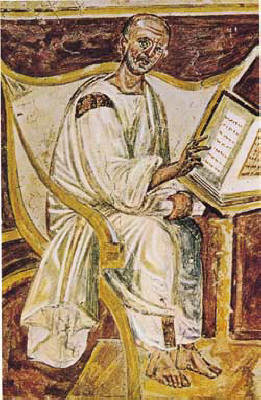One measure of a book for me is whether or not I can reference it in one of my own scientific/historical studies. This book passes that test, as I have referenced it in a book I am currently editing for Springer.
Even though this is a book about a theological issue that persisted for centuries, it is much more than that. On page 150, for example, is a chart showing the classical divisions of justice. I sent this to a friend who is now in his final year of law school. He tells me that this is the first time he has seen this important chart showing the relationship between justice, word & deed, jurisdiction and government. It comes from an analysis of divine justice by John Owen (1616-1683), one of the two English theologians under study in this book by Joshua D. Schendel. He is a Professor of Theology at Yellowstone Theological Institute in Bozeman, Montana.
The other person under the microscope here is William Twisse (1578-1646). To quote Schendel, this is the key argument under study: “Twisse’s Argument focused particularly on the justice and power of God in order to argue that God does not punish sin, or require the satisfaction of Christ, by an absolute and natural necessity, but only by the free constitution of his will.” The “satisfaction of Christ” (which is the book’s title) is nothing less than his death at the hands of the Roman authorities.
The matter was argued most eloquently by St. Augustine (354-430), and all the Reformed debates of the 17th century (more than a thousand years later) were played out within the framework he established. Schendel calls it Augustine’s Dilemma, and he lays it out in four parts:
- Either God could save fallen humanity only by the Incarnation and death of the God-man [Jesus] or he could save fallen humanity in some other way.
- If God can save fallen humanity only by the Incarnation and death, then God is not omnipotent.
- If God could save fallen humanity in some other way, then his choosing to save in this way is unwise.
- Therefore, God is either not omnipotent or he is unwise.
People really did twist themselves in knots about this for centuries! The matter was put succinctly by Augustine’s follower Anselm. “Without satisfaction,” he wrote, “this is, without the willing payment of man’s debt, God cannot remit sin unpunished.” The debate raged. Conradus Vorstius (1569-1622) said God could have saved sinners in some other way than the death of Jesus. John Yates (d. 1657) maintained that only by that death (ie the satisfaction) was it possible for God to reconcile and redeem sinners.
To debate the question, theologians naturally had to assert that they either knew the mind of God, or understood what limits such a deity has. The hubris inherent in such a stance beggars the imagination, but it not deter Twiss, Owen or many others from spending a good chunk of their lives writing about it. As they wrote more about it, the fine distinctions between one option and another increased, which Schendel describes in detail. One does not have to subscribe to any of this to find it fascinating, and it is certainly a fine case study, narrowly defined, of how supposedly intelligent people spent centuries on absolutely nothing. In its broader implications (not explored in the book), the rise of the scientific method of explaining reality becomes not only obvious, but necessary. By the 18th century, the Age of Enlightenment, the human mind left the labyrinth of caverns that had confined it for so many centuries.
The real denouement of the argument becomes apparent on page 135, where Twiss, after years of thought, came to the unassailable conclusion that “God is able to inflict suffering on someone without respect to fault.” In other words, a perfectly blameless person could very well be targeted for suffering by God. And yet, Twisse “thought it was essential to maintaining that God is perfectissimus.”
A really excellent book, this should be read first and foremost by anyone interested in the nature of justice (divine or otherwise). It will naturally appeal to theologians, but I believe it should be more widely read by historians who, in their quest to explore the origins of the so-called Scientific Revolution, deliberately ignore the pervasive reach of religious thought. It is not enough to simply acknowledge that different peoples belonged to different religions in Europe, and to quote from a few documents relating to Galileo’s trial or Bruno’s death, which happened during the lifetime of Twiss & Owen; it is necessary to understand what they believed, and (if possible) why they believed it. Just last week I attended a debate at the University of Texas; it was about the roots of morality, and the debate was between a professor of philosophy and a theologian. Scientists need to be open to listening to such debates if they truly want to understand what had led us from the Scientific Revolution to the verge of the AI Revolution.
There is a typo on page 53. It should read “subsequent to God’s will.” The word “to” is missing.
The Necessity of Christ’s Satisfaction: A study of the Reformed Scholastic Theologians William Twisse and John Owen. It is by Brill, and lists for $62.
Image: The earliest known depiction of St Augustine, it is from the 6th century. Lateran, Rome. Courtesy Wikimedia Commons.
PS: ignore the ‘LEAD’ line just below the image of Augustine
